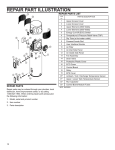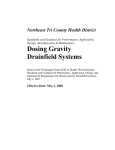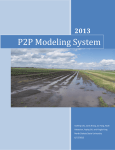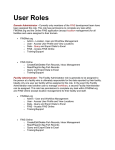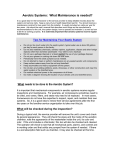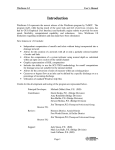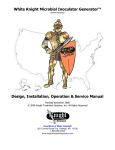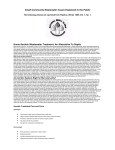Transcript
ARE YOU SEPTIC SMART? Troubleshooting Tips Symptom Possible Causes Toilets and sinks • Drains may be clogged. start to drain slowly • Septic tank may need to be pumped out. • Drainfield pipe may be partially blocked. • Plumbing vents may not be properly connected. • Have a plumber check the drains and vents. • Have a ROWP check septic tank. Extra plant growth • Clogged soil on the bottom of the drainfield, over drainfield area trenches or bed causing water to pond. • Excess hydraulic or organic loading to the septic system. • Have ROWP inspect septic tank and drainfield inspection ports and/or cleanouts. • Check water meter records for excess water usage that may indicate plumbing fixture leaks and/or inspect fixtures for leakage. Foul odours outside • Plumbing vents may not be properly connected. • Septic tank cover may not be properly sealed or covered with earth. • Wastewater may be ponding in the vicinity of the drainfield or surfacing nearby (see below). • Have plumber check vents. • Have ROWP inspect septic tank and ensure the cover is sealed. • Inspect soil above and in the vicinity of the drainfield for excess moisture or ponded water. Foul odours inside • Plumbing traps may not be properly installed. • Electrical conduits for septic system pump may not be properly sealed. • Pipe leading from house to septic tank may be broken. • Wastewater may be backing up into the home. • Have plumber inspect traps and inspect perimeter foundation drainage for presence of water during dry weather. • Have ROWP inspect the septic tank for the possible causes noted. Waste water backing up into home • Pipe leading to septic tank may be blocked. • Pipe leading to drainfield may be blocked. • Drainfield may be damaged or clogged. • Have ROWP inspect septic tank. Effluent breaking out to ground surface • Have ROWP check problems. • Soil cover over pipes may not be deep enough. • Inform Interior Health. • Pipes may not be sloped properly. • Part of the drainfield may have settled or been lifted by frost heave so gravity cannot drain pipes properly. • Distribution system may be damaged. • Pipes and/or soils in drainfield may be full and not able to drain properly. • Soil below drainfield may be too coarse or too High nitrate and/ shallow to adequately treat the wastewater. or presence of • Water table may be too close to the bottom of the coliform bacteria drainfield. in nearby wells, lakes, rivers and or • Wastewater may be breaking out from the drainfield into nearby drainage courses. streams 11 Action • Have ROWP inspect drainfield, inspection ports or cleanouts. • Inform the Interior Health.
